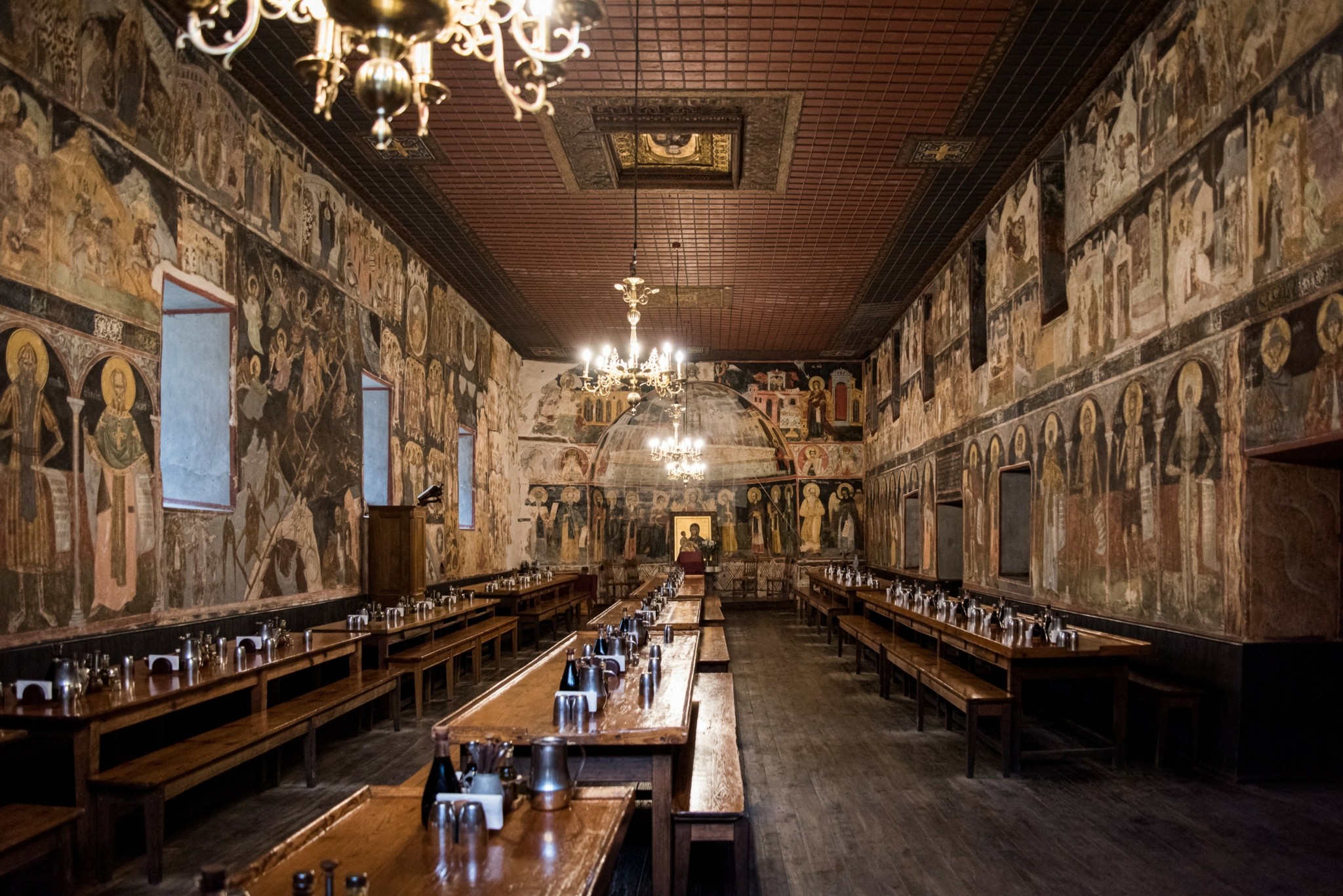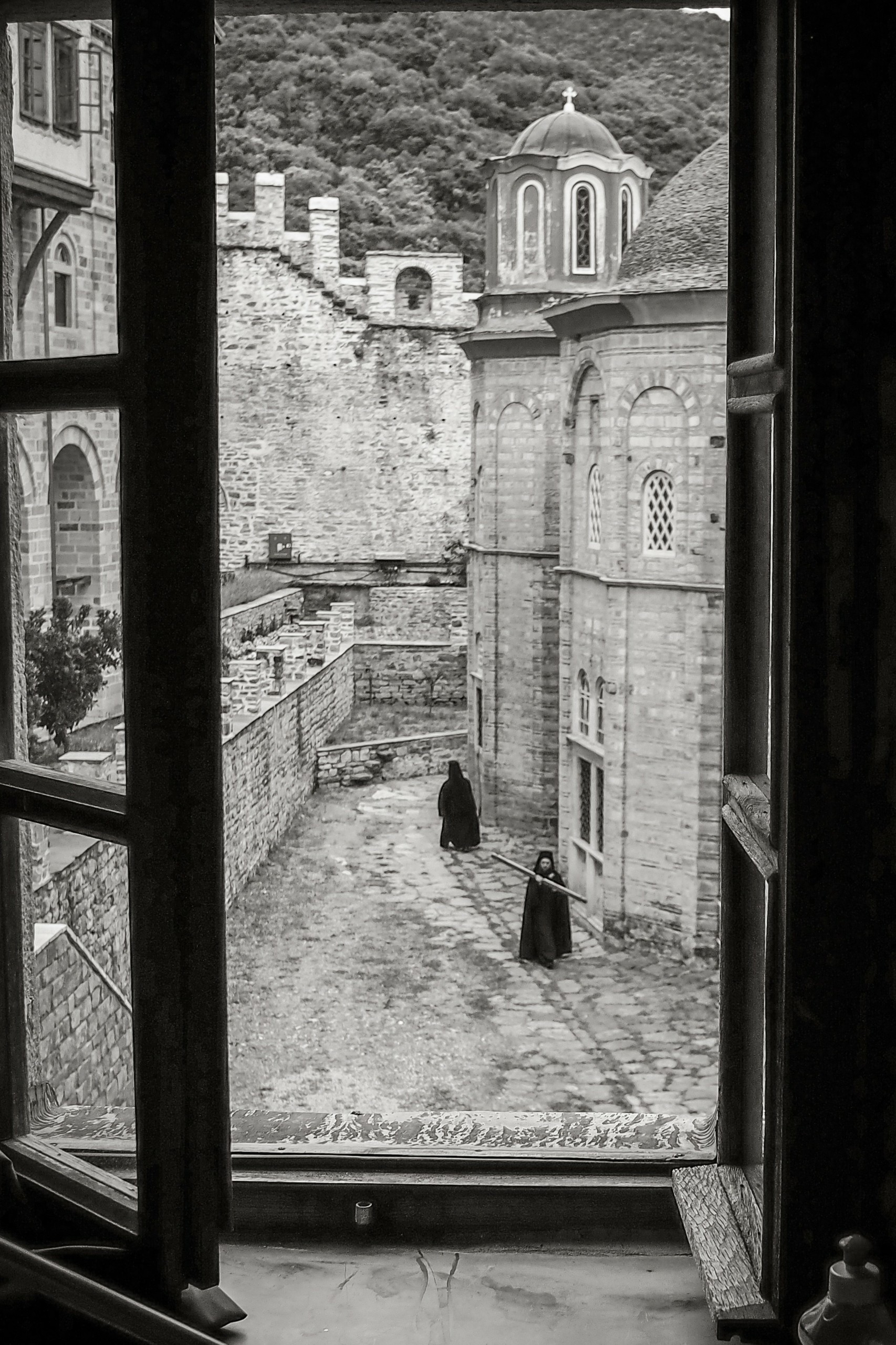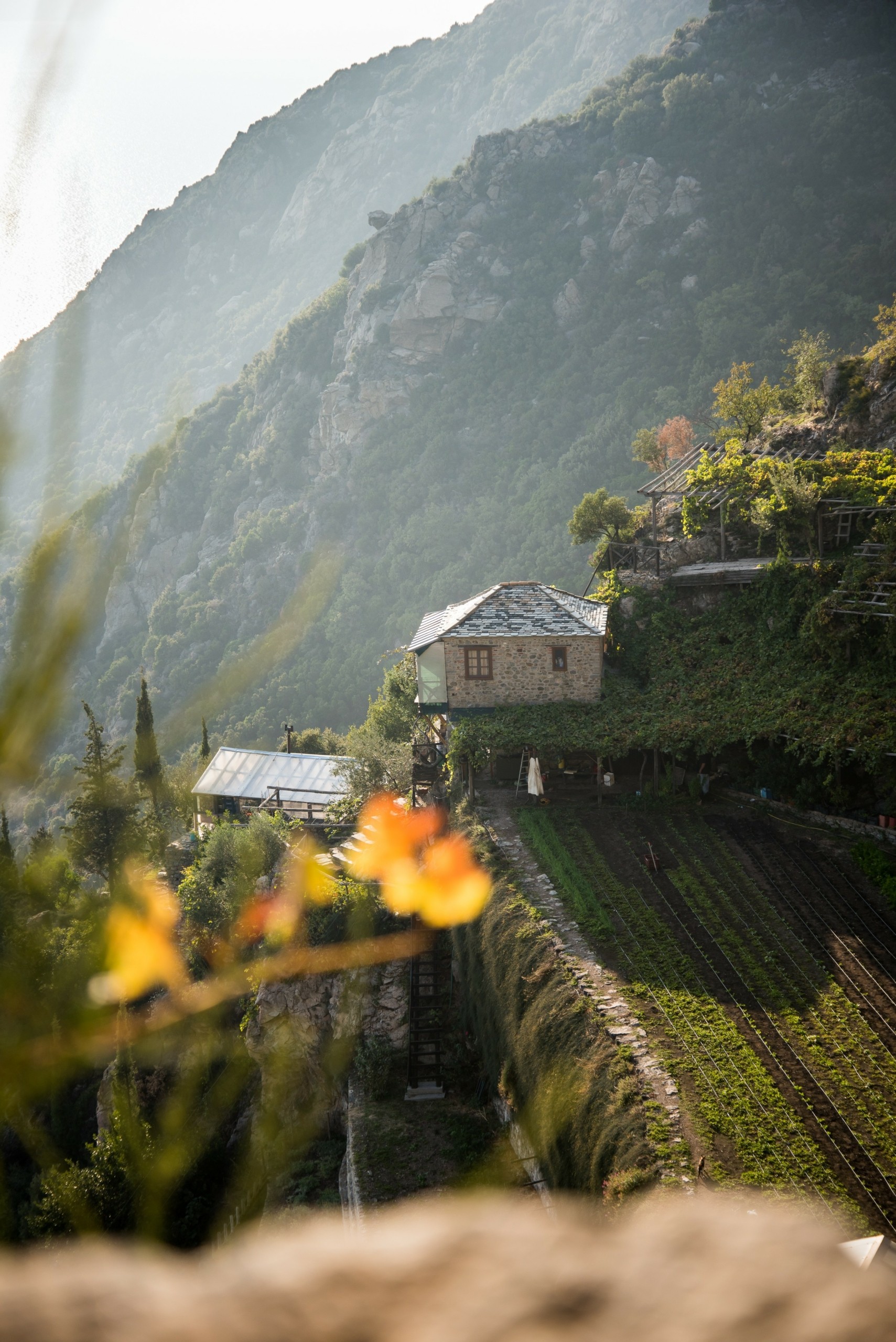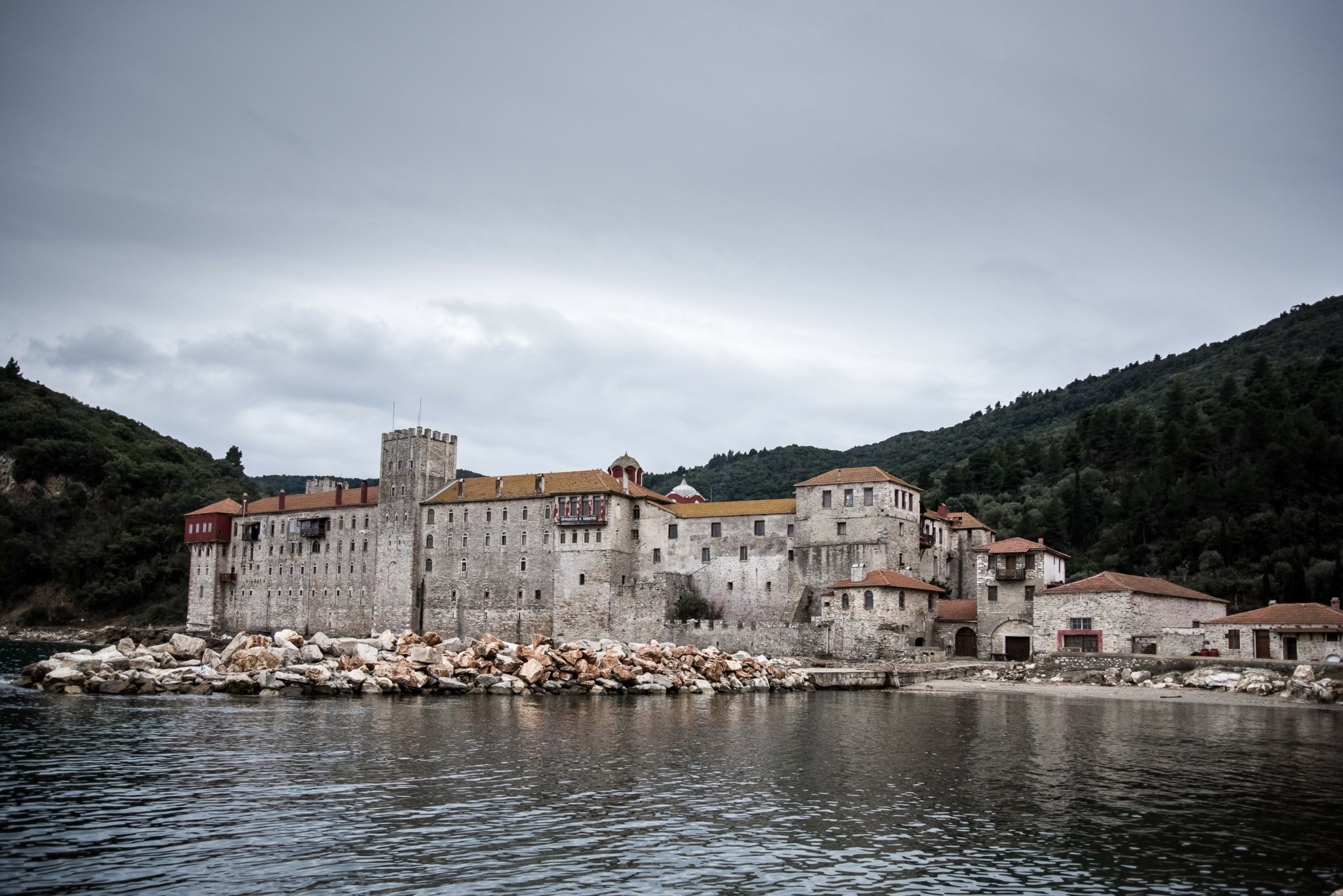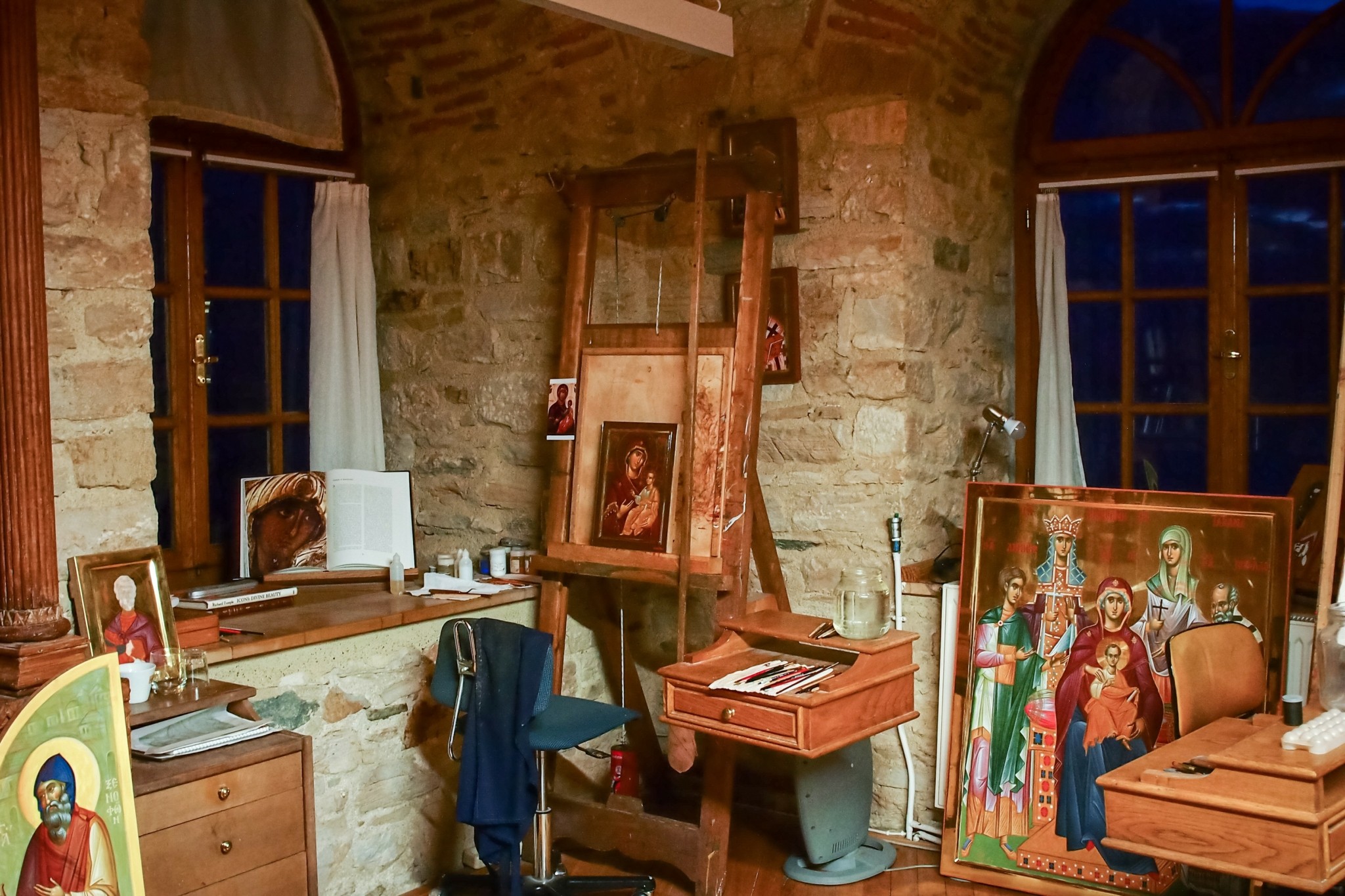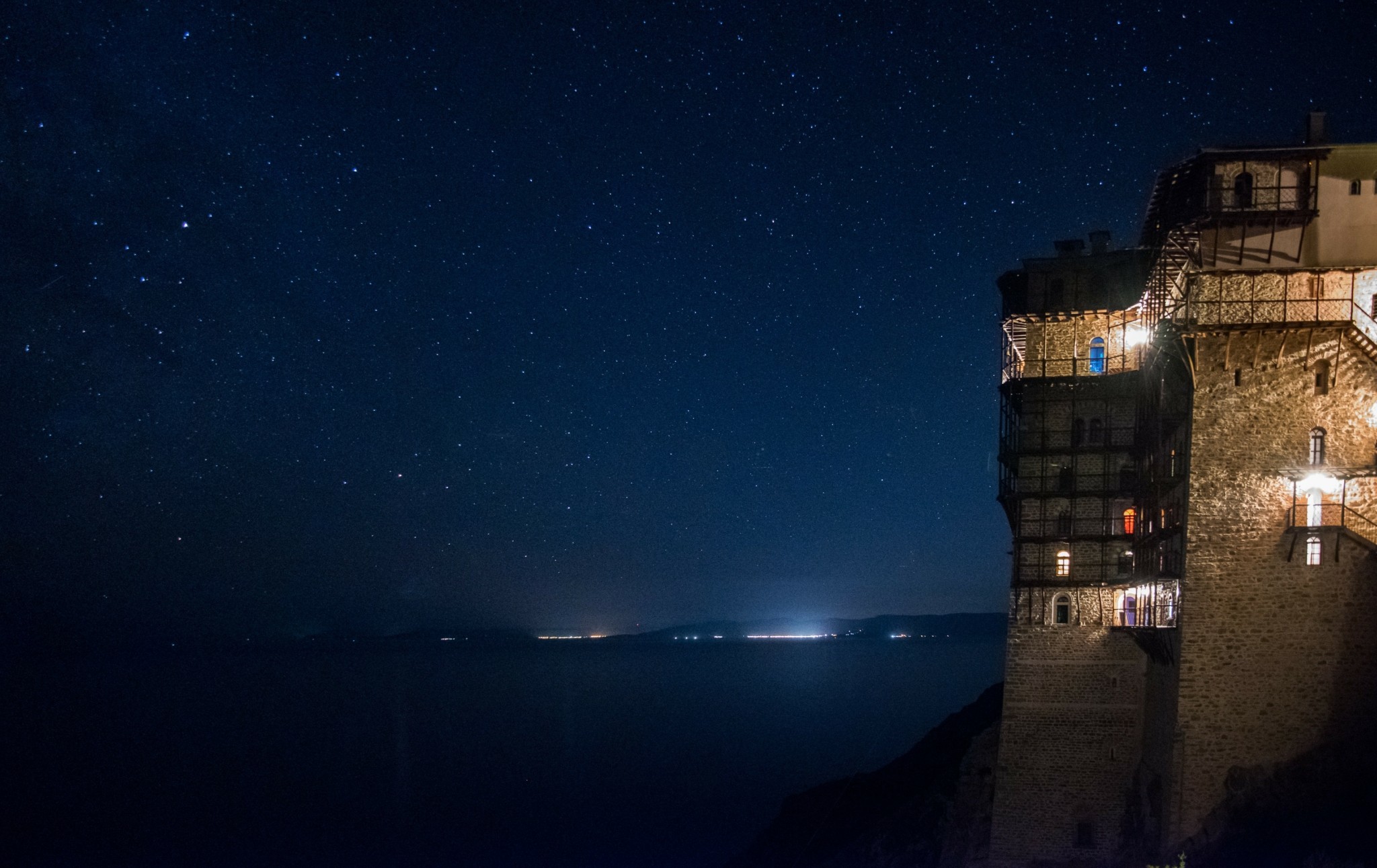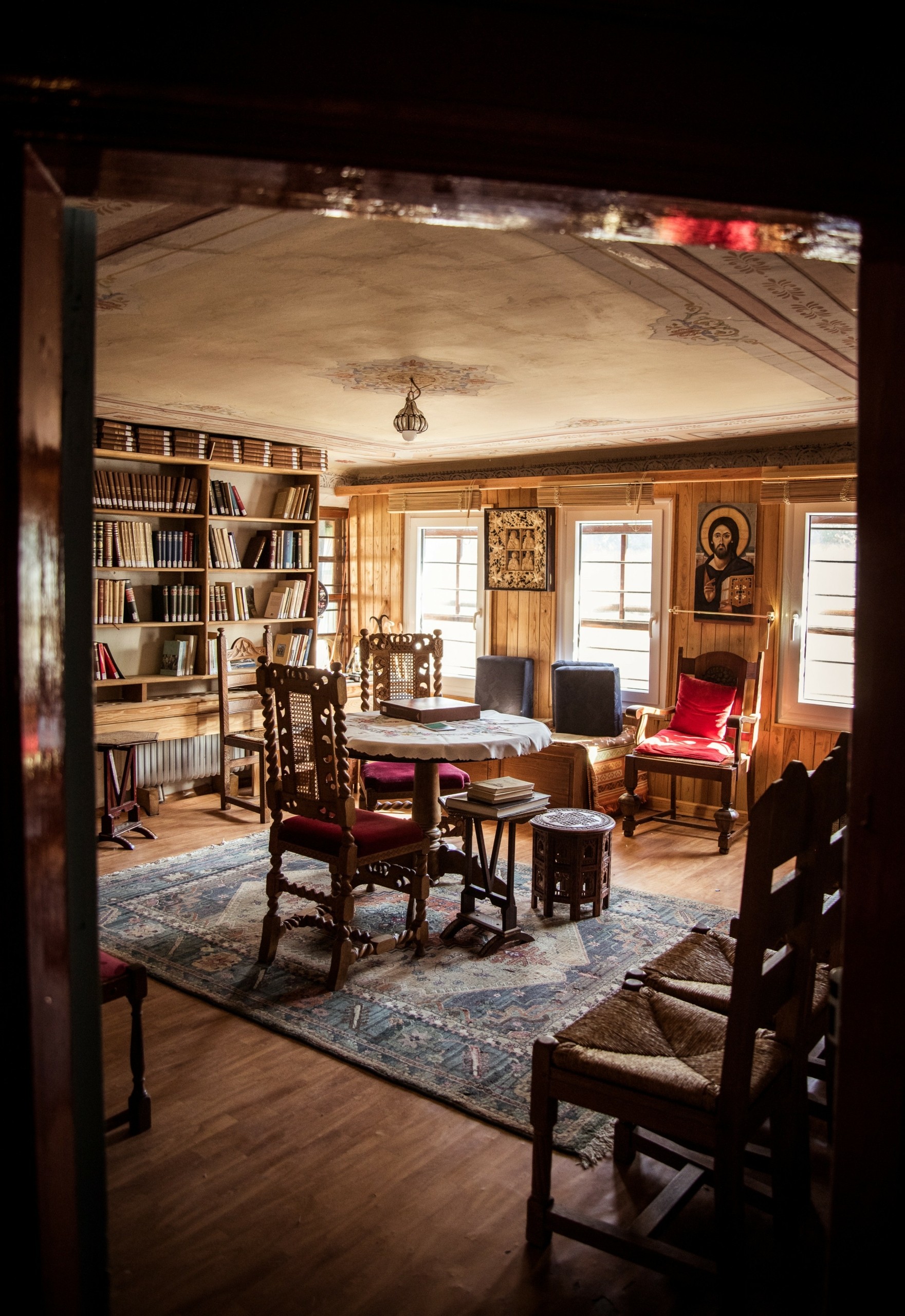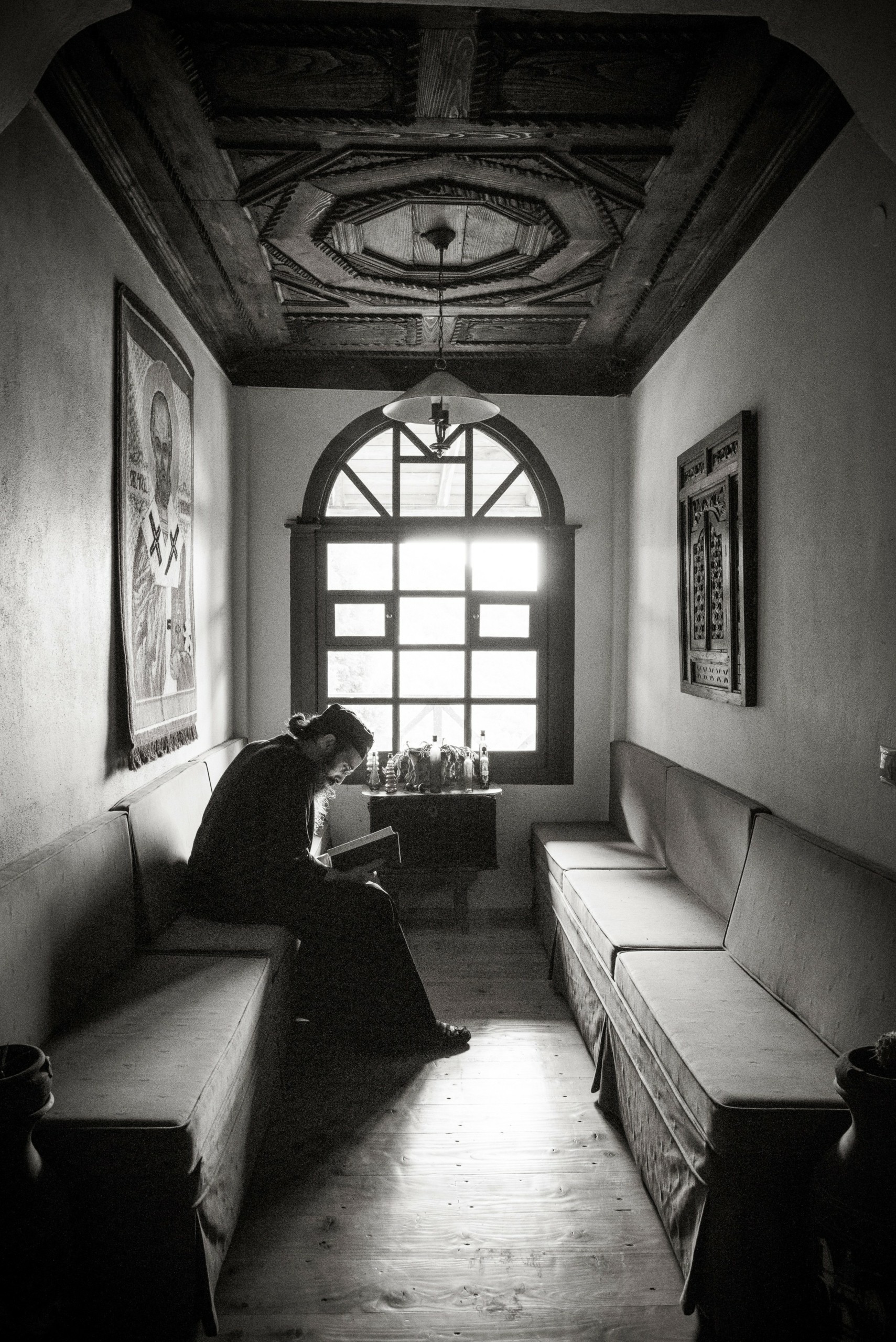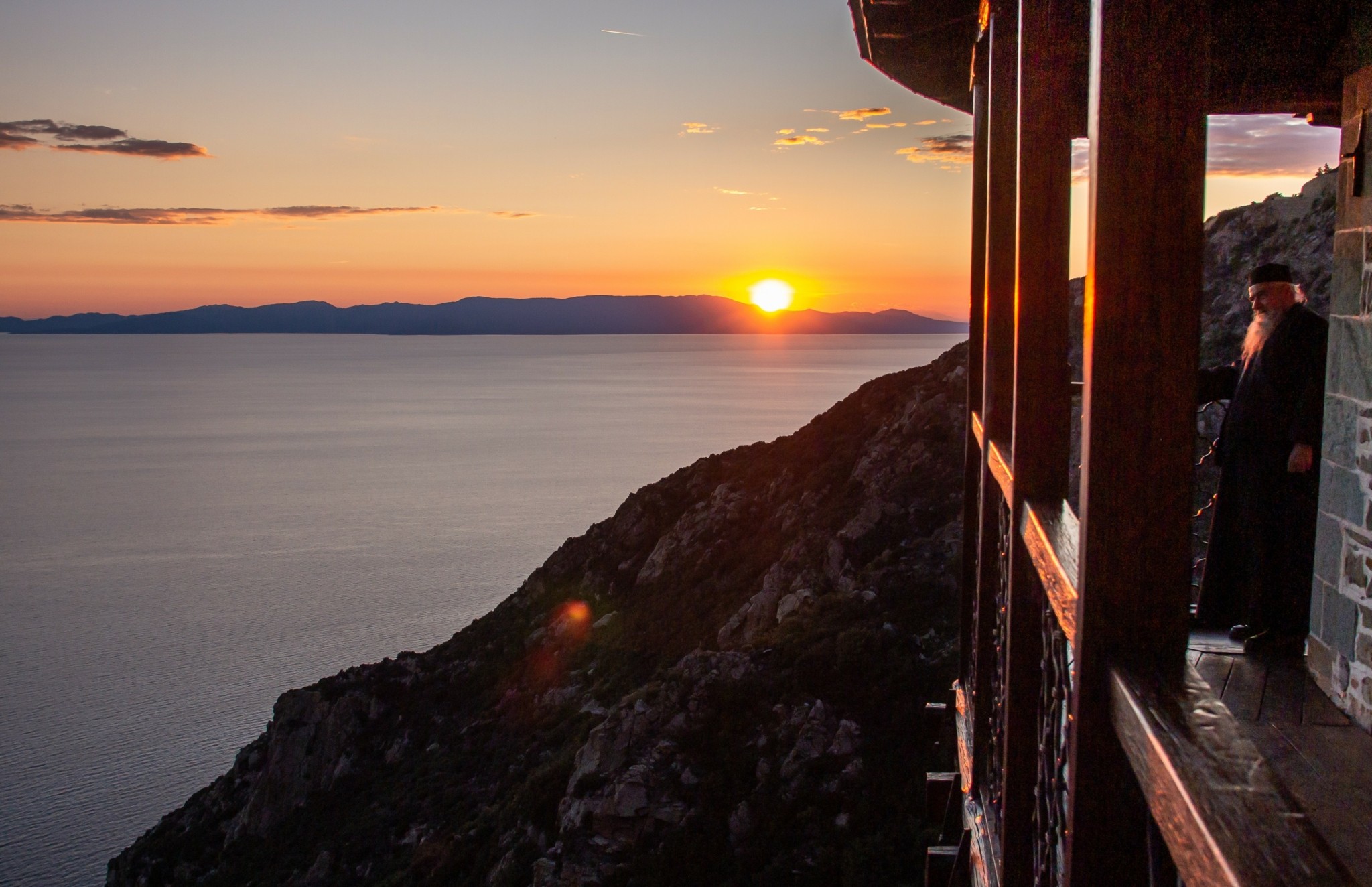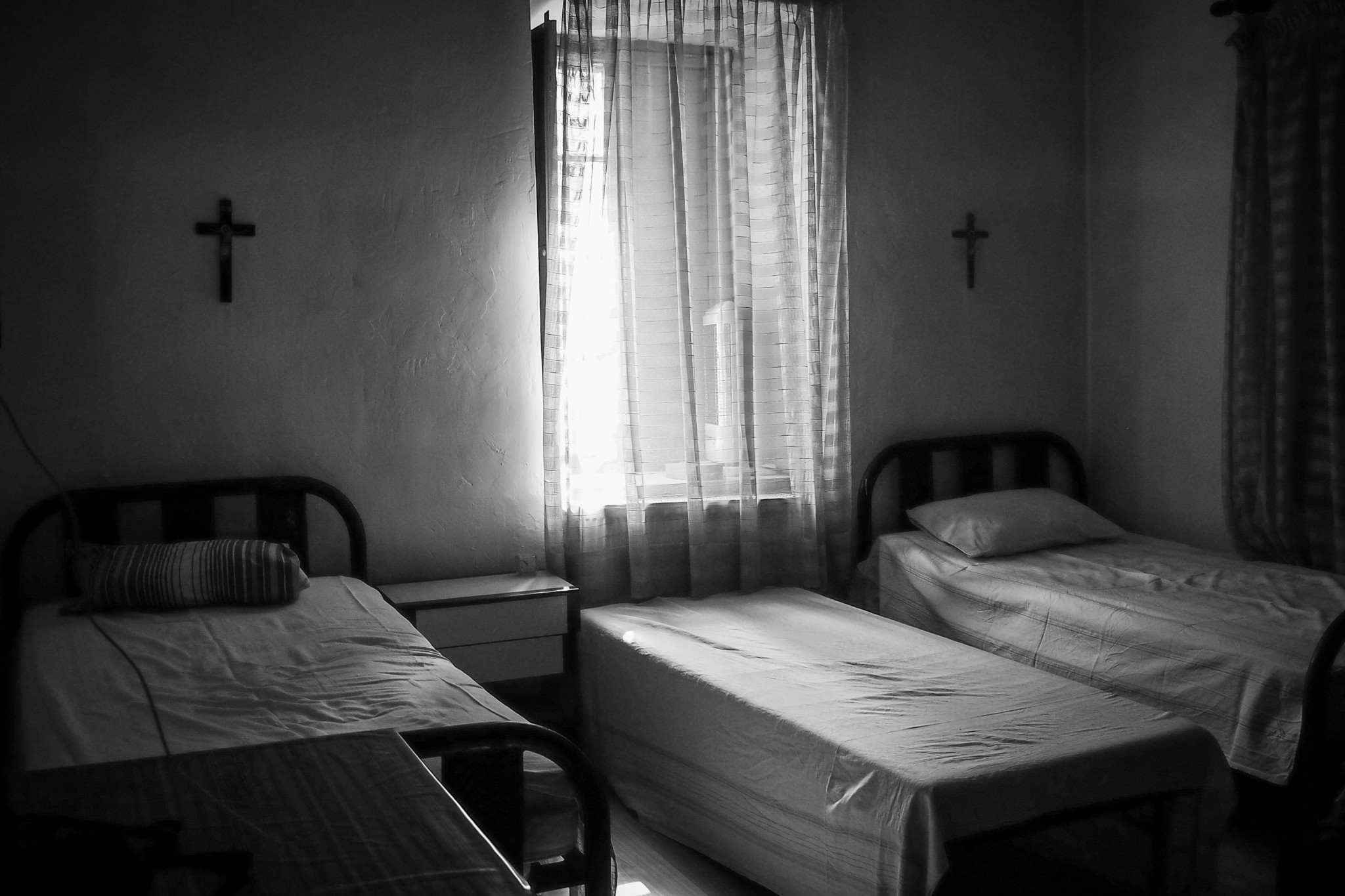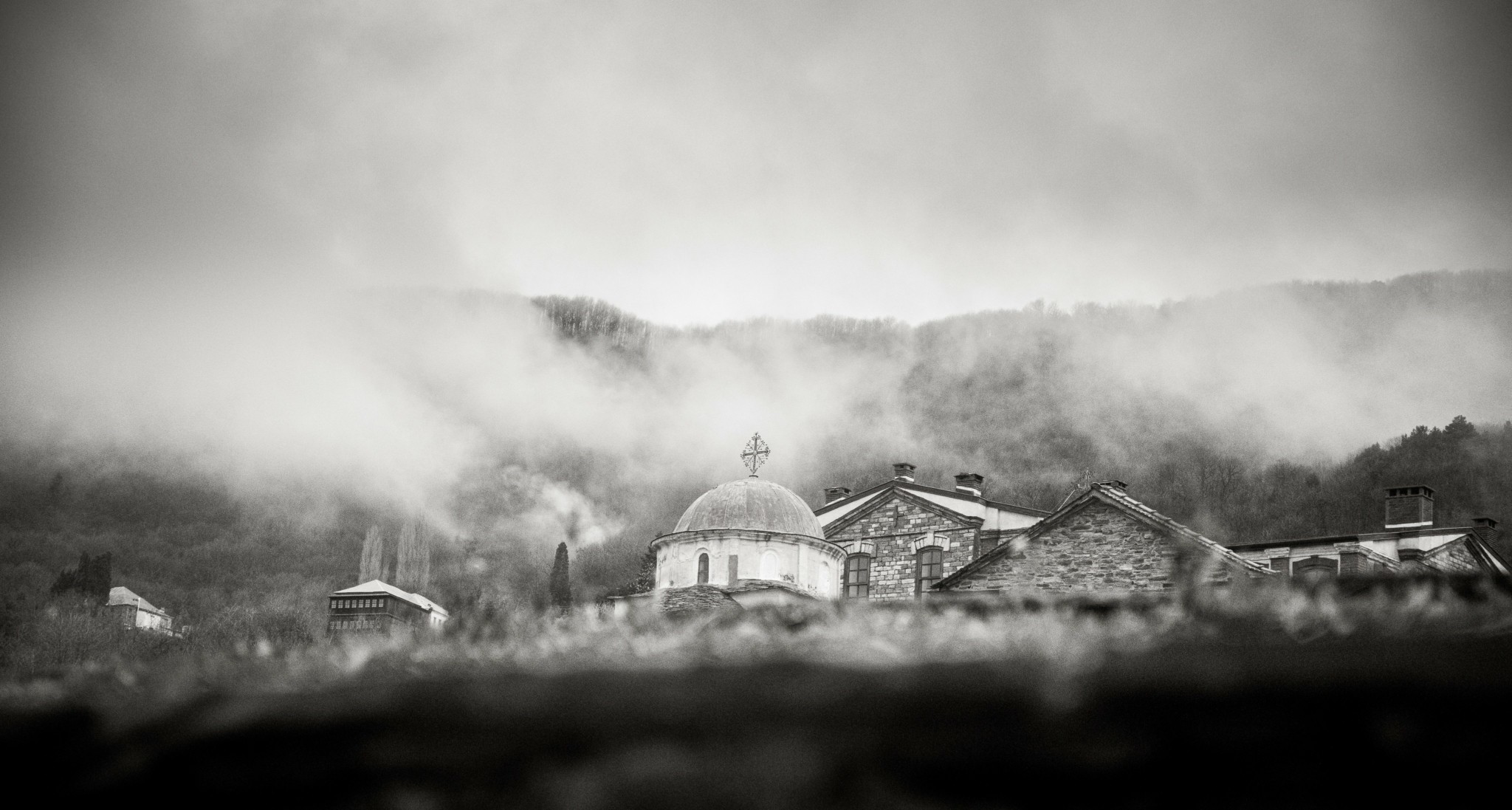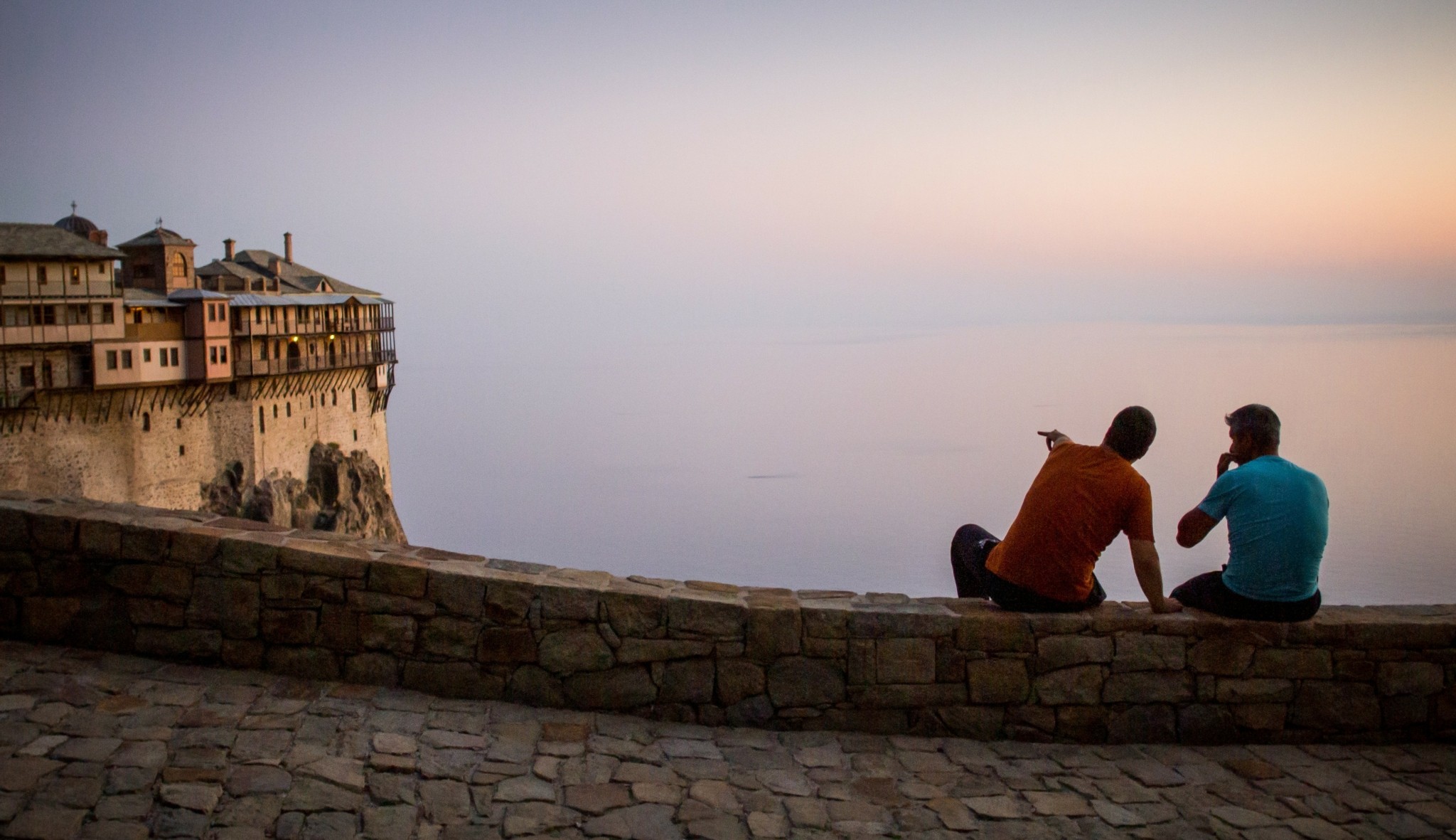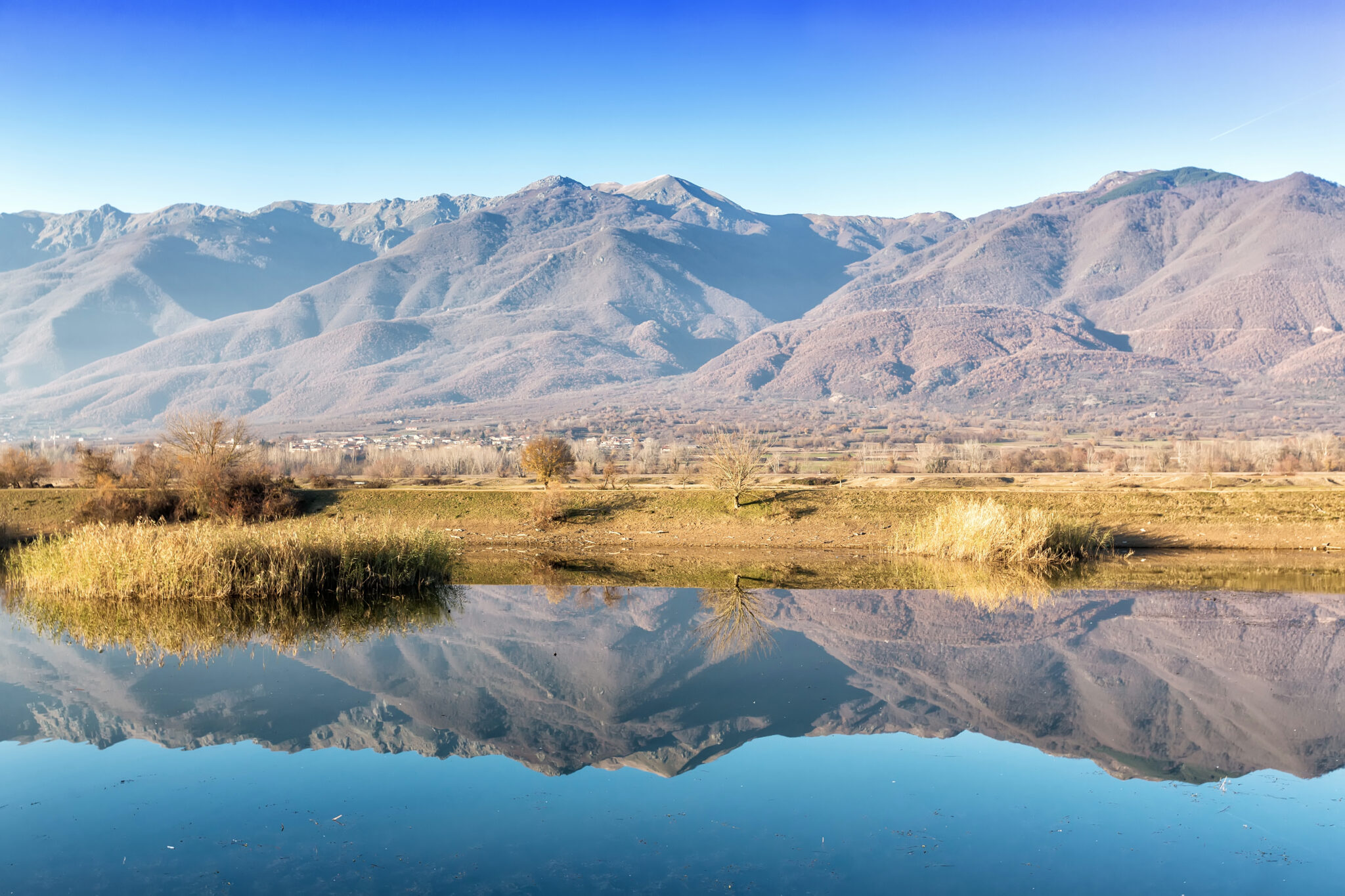Both my inner and outer quests have always been connected to music. Landscapes, situations and emotions were always invisibly linked to specific melodies. Which one affected the other, for many years, was unclear.
Lately I noticed that most times my sense of hearing took the lead, creating whole worlds for me and combining with it all my other senses. My first contact with Mount Athos was when, at a young age, I heard the song “Athos” by minimalist Stephan Micus. All the records of this particular record label include some great photographs, and this one, too, came with some photos of Mount Athos. In fact, in a magical way, what I felt while listening to the melodies completely matched what I saw in the photographs.
The world that those few images revealed contained a spiritual, pious atmosphere, different to the sterile, pietistic, churchy ceremony I knew – ever so slightly – from the churches in the city. It showed a simple but profound sacrament together with an ethnic, human element. So, the desire to visit it, one day, and for its melodies to become part of my own soundtrack, spread softly inside me. Many years later it was destined for my desire to become a reality, not exactly as I imagined it, but perhaps exactly as it should be.
Being asked to work for a while at a place like Mount Athos is for some photographers a dream come true. Of course, being asked to change your everyday habits is a challenge. For me it was a triple challenge since apart from adjusting my everyday life, I had to adjust my professional requirements, and, in addition, I was curious to learn, through various personal inner quests, the true meaning of Orthodoxy.
Of course, I had no idea
As I was making my suitcases and according to what I’d been told I’d face, I was thinking that the simplest and most practical, but at the same time somehow staid, clothes would be suitable for the occasion. So, one rainy winter Sunday night, I was ready – or almost ready – to climb the third leg of Halkidiki. I remember I had a map of Mount Athos on my phone, a PDF with the trails and routes, and a lot of music. In my mind, my excitement for where I would soon be and for the new job, a melancholy for the warmth and cosiness I was leaving behind, and a wild joy for the unknown co-existed. I was thinking about the record I had heard back then; about what I was going to face; I was furiously thinking. I’d heard so many things, from stories about the Holy men to gossip, and from tales of ragged men of cloth with nothing to their name, to legends about rich monasteries with large treasures. Fortunately, I kept an open mind, without prejudice, and moved forward.
Going to Mount Athos without prejudice is, probably, the best equipped you can be. Also, for me, it was one of the rare times that my anticipation for the destination was stronger than that for the long journey. Or actually, this particular destination had the potential to become the beginning of a long journey. I had no idea, of course, about the “road” that would open ahead of me, about the ordeals, the exercise and the repentance – repentance as a reversal of the mind towards a new direction, like the monks define it, and not as remorse. The “exercise”, then, started while I was still on my way there.
The most direct way, for someone living in Athens or further down to the South who does not want to spend the night in Thessaloniki or Halkidiki, is to take the bus. And if someone is visiting for long, since they can’t take a car inside Mount Athos, leaving the car at a parking is not an affordable solution, so the bus is the only choice. The journey begins in Athens, at night, and ends at the station of Halkidiki, at dawn. From there, after a short stop, you need to take another bus to end up, around three hours later, to the port of Ouranoupolis in Halkidiki, the border of Mount Athos. After a short stay there, you leave (after you receive the permits to stay) on a boat, in the direction of Mount Athos, that looms over the south part of the peninsula.
Before the port of Dafni, located in the centre of Mount Athos, a few kilometres further south from Karies – the capital, located at a 400-metre altitude – the boat made a stop (the 4th, if I remember correctly) at the Monastery of Xenofontos where I got off. From the port of Dafni one can depart for almost anywhere, as there are buses waiting for the ferry boats to take visitors to the capital and from there, depending on the number of people (due to the cost) there are private vans taking the visitors to the different monasteries. But it’s best to have consulted a map beforehand, to know your way if need be. There is also the chance that many travellers are going the same way, so you can form a group and join with them up to a point – it’s a pity to get stranded in Karies, because everywhere is a long trek from there. It should be noted that the distances you’ll need to cover are substantial.
“Vespers and table at four”
It was already noon when I entered the monastery and my sleepiness, the exhaustion and the changes of landscape had created a fog in my head.
“Vespers and table at four” said the Arhontaris, the monk in charge of welcoming people and offering coffee, loukoumia (Turkish delight), water and, in general, whatever is offered in the sitting quarters, which are called Arhontariki. So, after some rest, the visitor opens his eyes in a frugal room, usually shared with other visitors, and while the fog of tiredness has left, there is a new, cultural jet lag to deal with. From the city noise he finds himself in the quiet of a monastery, from the fast pace of everyday life in the calm routine of the monastery, and from the city grey in the almost unspoiled nature. Thousands material and practical goods, devices and appliances like the TV and the radio etc, are replaced by a simple routine that aims at exclusively dedicating oneself to worship, prayer and reverence.
My daily life changed in my very first hours there. Where I was, where I ate, how I acted, what I listened to, what I smelled had were all completely different from my previous experiences. The monk meant dining room when he said table, and after so many hours, the dinner seemed like the richest meal ever. The food, always meatless, varies from monastery to monastery, but is usually good, Mediterranean cuisine, and served at such hours that if one gets used to it (eating lunch in the morning, dinner in the evening, at sunset) it’s hard to feel hungry in between. Unfortunately, if one does feel hungry and hasn’t brought his own provisions, it will be hard to get a snack at the monasteries.
Kindness, calmness and brevity
With the passage of the first days, I noticed that the whole atmosphere wasn’t at all about what I was expecting to find. The monks are anything but aloof; in their majority they proved to be eager to help, simple, practical and with structured thoughts. They made me feel welcome and also equal to everyone. Their kindness, calmness and brevity permeated everything.
So, I adjusted. It’s impressive how easily a man adjusts to this way of living already from the first days. I can’t deny feeling a sense of confinement, but this too is part of monastic life, that is, when you spend a long time in a monastery not just as a visitor for a few days. Another thing that made an impression on me was that while there had been many days during which I hadn’t listened to music, it was as if I didn’t feel like listening to anything – definitely not in the way I listened to music outside Mount Athos. In my mind I could hear the psalms I heard in the deep of the night when I attended the morning mass, right before sunrise. Unforgettable rituals. I would sit, half-asleep, dizzy, before daybreak, inside the central church of the monastery, that is called the Catholicon, in the soft light of a few oil lamps and even fewer candles, listening to Byzantine psalms while around me, at irregular intervals, black-clad shadows silently passed and disappeared to sit at a remote pew in the dark. This image is for me the height of my impressions and of the atmosphere of Mount Athos. A monk I met in another monastery, who used to be an electronic music producer once told me: “Imagine what happens right before the sunrise when all the monasteries, the skētes and the cells around Mount Athos are simultaneously chanting.” There are no “transceivers” of such intensity, nor will there ever be.
As I took pictures of the monasteries, I noticed that the human element of admiration for the heirlooms wasn’t present in the monks. Their admiration and respect were clearly for what each object represented, and not for the objects per se. I remember one time when the same monk, who was wore gloves and prayed before touching the sacred vessels, when a small clay heirloom was slightly damaged calmed us by saying “Why do you care? This existed before us and it will be here after we’re gone, let’s just glue it.” Another time, when we were taking photographs of icons of the 17th and 18th century, an old man we’d never seen before, nor did we see again, entered the “studio” we had constructed, to take the icon back to his cell – he lived in a cell outside the monastery. He needed it for the Vespers service that he performed alone. He was pleased when he saw that we had cleaned the protective glass. “Father, the icon you have in your cell is historic” we told him. “I don’t know, my children, it was here and here it will remain” he answered.
At night, on the monastery’s small balconies, if it’s not too cold, you re-evaluate a lot of things
When it’s winter and the power is switched off at six o’ clock in the afternoon, there isn’t much to do. So, human contact is inescapable, interpersonal relationships strengthen and conversations often end in personal confessions. At night, on the monastery’s small balconies, if it’s not too cold, you re-evaluate a lot of things, you analyse yourself, you ponder. And that’s how the first few months passed.
I also visited then, among other monasteries and skētes (smaller communities of Christian hermits with a common area of worship), the capital with its few shops and many sights, to take photos. From there, one indeed has the opportunity to visit almost the whole Mount Athos. The trails need a sturdy 4×4 car, and of course someone to be the tour guide. Alternatively, you need to plan your time well, secure transportation and get in touch with each monastery to arrange accommodation. The trails are countless, and they always lead to a monastery or skēte. After months on Mount Athos, it was time to see the land’s natural beauty. The landscape resembles paintings, and each small or large place has centuries of history behind it and there’s a monk to tell the story. Carved rocks, springs with amazing myths and legends linked to them, cells with rare features, konakia (monk cells in locations outside the borders of each monastery) with countless books and icons.
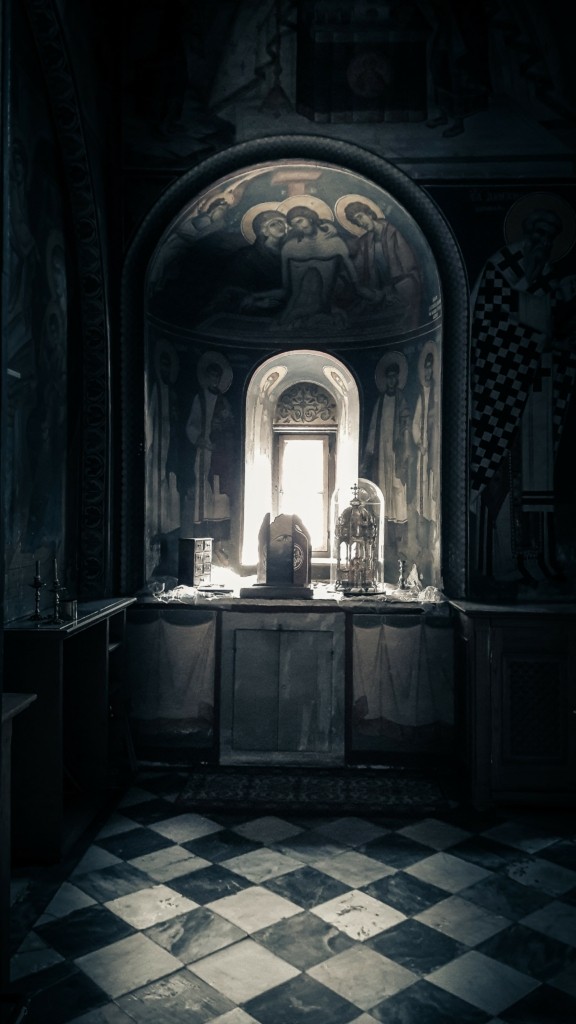
Around the end of my “Athos service” and with the truly beautiful Monastery of Simonos Petras that, literally, hangs at 300 metres over the sea, on a granite rock, as my starting point I had the chance not only to visit many different landscapes, monasteries, skētes and monks’ cells, but also to speak with many monks. I met two truly remarkable “fathers”, as we, the “laity” call the monks, and with them we roamed, many Sundays, from early in the morning till sunset, when the large monastery gates close. From cells that functioned as binderies, where the monks run to welcome us, to the Monastery of Esfigmenou where, to our great surprise, the fathers that accompanied us were not allowed to enter the temple. From the patronal festival of the Monastery of Megisti Lavra with the huge pots, to the vines at Milopotamos with the sweetest wine. From the bright and cheerful Arhontaris of the Skēte of Prophet Elias and the sweet Monastery of Pantokratoros to the strict Church of Protaton. From the small, quiet Monastery of Stavronikita to the huge, evolved Monastery of Vatopedi that resembles a village. Understanding my craving to capture all of these experiences, the fathers helped my dream come true. “Before you leave you need to have a lot of visual material”. And so, it happened. Partly at least, since I’ve left a difficult part for the future.
To record the harsh and difficult part of Mount Athos, and also the mountain itself. In the end, the monasteries’ treasure is their history that they’ve kept alive all these centuries; a history that starts in the Byzantine Empire and reaches today, a history that the monks keep alive with effort, since they have to face not only their personal challenges but also the frail balance between modernisation and the preservation of the monastic ritual of all those centuries. It’s a different time, with different difficulties. The friction and the effort continue to smooth their souls, just like it used to. The heirlooms are countless and rare, and their value is more historical than financial. The moments are pious and spiritual but at the same time simple. All this is what’s calling me to go back, to see and experience more. The beauty, I discovered, was not to adjust the experience to me but to adjust myself to it. After all, this contains a deeper level of the Orthodox truth, regardless of the location.
Once more, music had revealed a truth to me: the experiences that I gained from staying in Mount Athos were superior to what I had felt when I was listening to that record in the past. It was the ideal place to “turn my mind” towards new paths. Paraphrasing Saint Paisios: Mount Athos is like a big field and each insect that enters will go to its place to feed. Everyone will experience it depending on their filters, their needs and desires. But perhaps the objective is to leave all of that behind, in Ouranoupolis.



